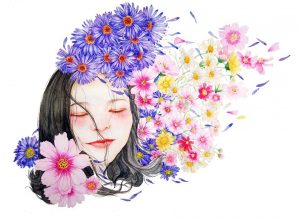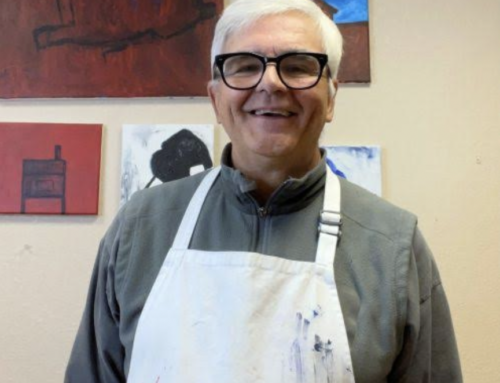There is something deeply gratifying about dancing to your favorite song, putting the final touches on your painting, or stretching yourself to explore a new genre of art. Whether we paint, sculpt, dance, write, craft, or play an instrument, we are all creative creatures in some way. Scientific studies are beginning to put words to what many artists have known for years: listening to one’s creative instincts can have an amazing impact on mental health. Creativity brings life beauty, imagination, emotion, and inspires us—it also serves to combat loneliness, relax us, and support cognitive functioning.
1) Art Combats Loneliness:
As more and more US citizens admit to feeling isolated from the world around them, health experts are warning against the rise of a “loneliness epidemic.” Cigna’s 2020 Loneliness Index revealed that 61% of the US population was experiencing loneliness even before the onset of COVID-19. Unsurprisingly, the pandemic further added to the issue, with loneliness rates increasing in one third of US citizens since April 2020, according to a SocialPro study. Individuals who report persistent loneliness often feel depressed, anxious and are at a heightened risk for developing eating disorders, Alzheimer’s disease, sleep disorders, and suicidal ideation.
Fortunately, art plays an incredible role in connecting people. The World Health Organization (WHO) reports that the arts create a feeling of belonging by cultivating “a shared sense of success,” “shared motivation,” and importantly, “group identity.” Creative activities such as music, dance, singing, and community art projects offer participants an opportunity to feel socially included, synchronized, and a part of a shared purpose. Experiencing the creative process with others can also serve as a wonderful way to better understand one’s self and others. Art can act as a “bridge between different groups,” adds WHO, specifically bringing together those of different cultures, physical capabilities, generations, levels of health, and professions. Art serves as a universal language in which we can all be a part and included. It anchors us to purpose and belonging, qualities that bring us away from perceived isolation, and towards connectivity.
2) Art Relaxes Us:
Busy schedules and the daily stresses of life can cause anxiety and emotional distress in anyone. For some, anxiety takes a major toll on their mental health. In fact, the Anxiety and Depression Association of America claims that over 18% of the US population suffers from an anxiety disorder of some kind. Adding art into one’s wellness routine can be an excellent way to cope.
Art therapy has been a useful aid in treating patients with anxiety disorders. A study that looked at art therapy’s impact among women aged 18-65 suffering from anxiety found that the process of creating visual art is connected to “improved psychological resilience on a neural level…” Another study published in the Journal of the American Art Therapy Association found that just 45 minutes of visual art making can significantly lower the release of the stress hormone cortisol. Participants in the study further described the process of visual art making, including the use of paper, clay, and markers, as relaxing, pleasurable, freeing, and inspiring.
Regardless of an anxiety disorder diagnosis, many of us look to some form of art to help regulate and soothe our unsettled minds. In moments of distress, we often feel called towards some form of creative outlet: listening to relaxing music, working a piece of clay, sketching, or writing poetry are some common ways people choose to calm their nerves.
3) Art Supports Cognitive Functioning
From frequently forgetting things to feeling less mentally quick, losing one’s cognition is a scary thing. The Center for Disease Control and Prevention reports that 1 in 9 adults admit to having subjective cognitive decline (SCD) in the US, meaning that they have been dealing with memory and confusion issues for the past year. SCD is one of the first symptoms to be detected in Alzheimer’s disease patients, and can impact a person’s ability to live an independent and healthy life.
Luckily, the arts play a huge role in preventing cognitive decline. WHO defines cognitive reserve as “the resilience of our brains as we age,” which can be maintained through routine engagement with cultural activities such as theatre, music, dance, and visual arts. For example, WHO claims that ten years or more of devotion to an instrument leads to “stronger visual spatial abilities, executive functioning and memory in older age.” Musicians are also at a lowered risk for developing dementia. Furthermore, evidence suggests that dance and theatre have a positive impact on memory and other functions of cognition. While aging is an inevitable part of life, it is comforting to know that art can be both a fun and healthy activity for the maturing mind.
Beyond a balanced diet, exercise routine, and sleep schedule, it is clear that art is an additional necessity to wellness. So, next time you are feeling low, nervous, or bored, start a creative project and take note on how you feel.
Studies and Resources Cited:
Abbing A, de Sonneville L, Baars E, Bourne D, Swaab H (2019) Anxiety reduction through art therapy in women. Exploring stress regulation and executive functioning as underlying neurocognitive mechanisms. PLoS ONE 14(12): e0225200. https://doi.org/10.1371/journal.pone.0225200, https://journals.plos.org/plosone/article?id=10.1371/journal.pone.0225200
Anxiety and Depression Association of America (2020). Facts and Statistics. https://adaa.org/about-adaa/press-room/facts-statistics#:~:text=Facts%20%26%20Statistics.%20Advertisement.%20Anxiety%20disorders%20are%20the,older%2C%20or%2018.1%25%20of%20the%20population%20every%20year.
Centers for Disease Control and Prevention. (2019). “Subjective Cognitive Decline — A Public Health Issue.” Alzheimer’s Disease and Healthy Aging, Centers for Disease Control and Prevention. https://www.cdc.gov/aging/data/subjective-cognitive-decline-brief.html#:~:text=The%20prevalence%20of%20subjective%20cognitive%20decline%20%28SCD%29%20is,11.3%25%20among%20men%20compared%20to%2010.6%25%20among%20women.
Cigna. (2020). Cigna Takes Action To Combat The Rise Of Loneliness And Improve Mental Wellness In America https://www.cigna.com/about-us/newsroom/news-and-views/press-releases/2020/cigna-takes-action-to-combat-the-rise-of-loneliness-and-improve-mental-wellness-in-america
Fancourt D, Finn S. (2019). What is the evidence on the role of the arts in improving health and well-being? A scoping review. Copenhagen: WHO Regional Office for Europe; 2019 (Health Evidence Network (HEN) synthesis report 67). https://apps.who.int/iris/bitstream/handle/10665/329834/9789289054553-eng.pdf
Girija Kaimal, Kendra Ray & Juan Muniz (2016) Reduction of Cortisol Levels and Participants’ Responses Following Art Making, Art Therapy, 33:2, 74-80, DOI: 10.1080/07421656.2016.1166832
https://www.tandfonline.com/doi/full/10.1080/07421656.2016.1166832?journalCode=uart20#.V2GKm-YrI6g
Mann, F., Bone, J.K., Lloyd-Evans, B. et al. (2017). A life less lonely: the state of the art in interventions to reduce loneliness in people with mental health problems. Soc Psychiatry Epidemiology 52, 627–638https://doi.org/10.1007/s00127-017-1392-y. https://link.springer.com/article/10.1007/s00127-017-1392-y#citeas
SocialPro (2020). Report: Loneliness and Anxiety During Lockdown. https://socialpronow.com/loneliness-corona/







Leave A Comment